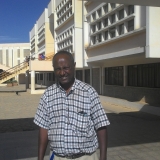Osteoporotic fractures are devastating public health problems due to significant morbidity, mortality, and the socioeconomic burden. In Ethiopia, the weight of such fractures is often underestimated due to lack of epidemiological data. The objective of this study was to assess the magnitude and pattern of osteoporotic fractures among adults admitted to zonal hospitals in Tigrai, North Ethiopia.
Two years retrospective hospital based medical-record review was employed. All fractures that occurred from September, 01, 2009 to August, 31, 2011 where the source population and osteoporosis related fracture cases were extracted. A total of 1173 charts were retrieved for further characterization of the cases with osteoporotic fractures. The sample size was proportionally distributed to the six hospitals, the cards were selected using a systematic random sampling technique and descriptive analysis was done using SPSS version 19.0. A total of 24,672 (15,402 males and 9,270 females) fractures of all types were extracted from medical records of the six zonal hospitals in the region (September, 2009-August, 2011), among which 2,294 (1,465 males and 829 females) were cases with osteoporotic fractures.
The overall prevalence of osteoporotic fractures was 9.3 % and the sex specific prevalence rate was 9.5 and 8.9% for males and females respectively. Characterization in terms of the fracture site, cause, residence, age, and gender was done for 1173 patient charts with osteoporotic fracture. Eight hundred twenty nine (70.9%) of the cases were males. The mean age was 50 (+12) with median age of 45 years. The highest proportion 441 (37.7%) of osteoporotic fractures were of the proximal femur; with higher proportion among males than females.
The majority of the fractures, 688 (58.9%) were observed between the age group 40-49. Osteoporotic fractures are not infrequent in Tigrai, Ethiopia. Clinicians and other health care providers should be more aware of osteoporosis as the predominant underlying cause of fragility fractures in the region.
